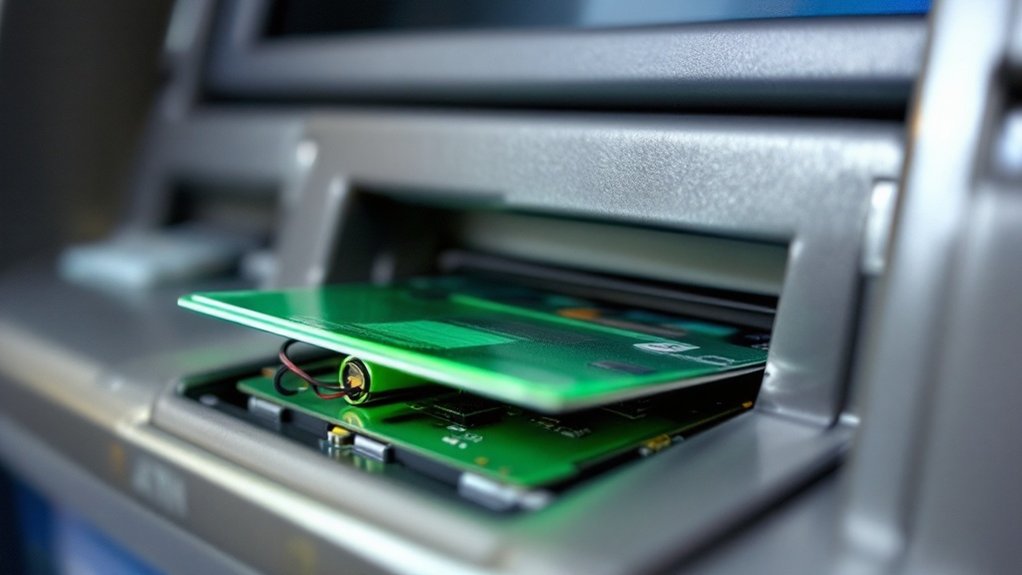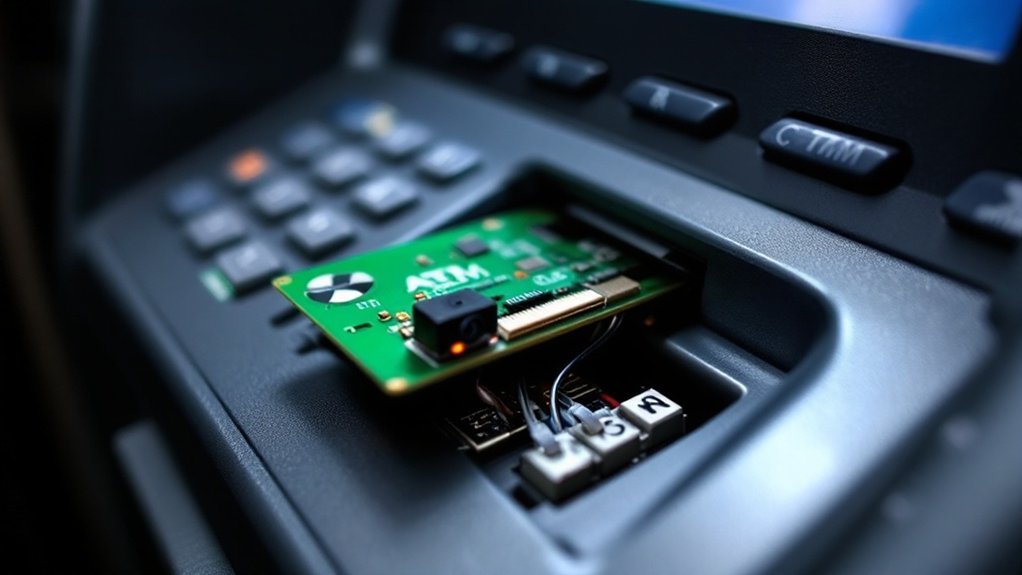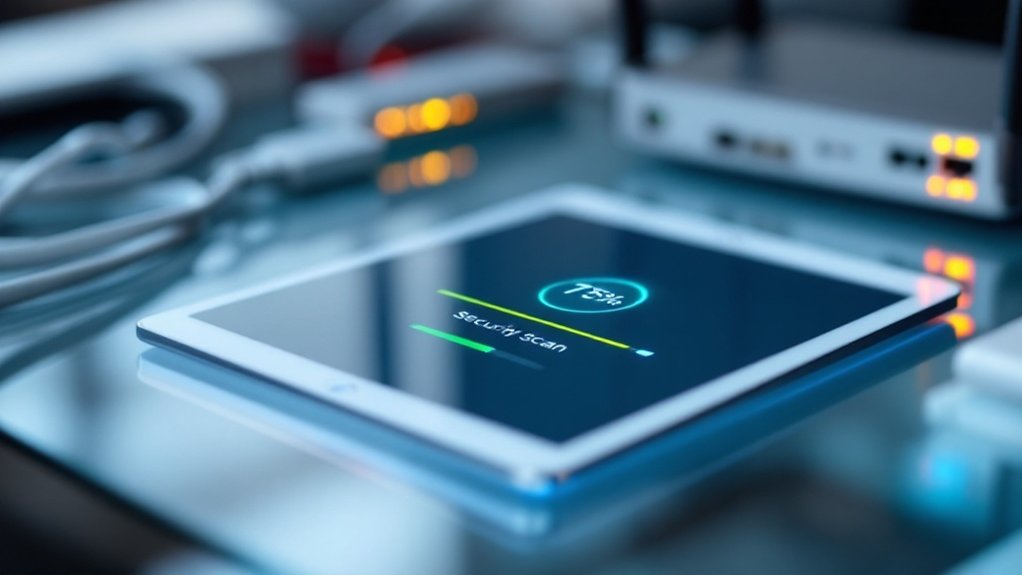A skimmer is a malicious device that steals credit and debit card information by attaching to legitimate payment terminals like ATMs and gas pumps. These devices, which can be physical or digital (e-skimmers), are designed to integrate smoothly with existing hardware while secretly capturing magnetic stripe data, EMV chip information, and PINs through hidden cameras. The cybersecurity threat costs the industry approximately $1 billion annually, affects millions of consumers, and forces businesses to implement increasingly sophisticated detection systems to combat evolving risks.

Every year, millions of consumers fall victim to credit card skimming schemes, a sophisticated form of financial fraud that poses an escalating cybersecurity threat. Skimmers are malicious devices designed to steal credit and debit card information by attaching to legitimate payment terminals, including ATMs, gas pumps, and point-of-sale systems. These devices are engineered to blend effortlessly with existing hardware, making detection challenging for unsuspecting consumers and businesses alike.
Credit card skimmers pose a severe financial threat, seamlessly infiltrating payment systems while remaining virtually undetectable to the average consumer.
The technology behind skimmers has evolved remarkably, encompassing both physical devices and digital variants known as e-skimmers. Physical skimmers can read data from magnetic stripes and EMV chips, whereas e-skimmers infiltrate e-commerce websites through malicious code. Often paired with hidden cameras to capture PIN entries, these devices transmit stolen data wirelessly or store it for physical retrieval, ultimately feeding into large-scale fraud operations on the dark web. Point-to-point encryption provides essential protection against data theft during transactions. Criminals frequently target self-service locations where they can install skimming devices discretely.
The financial impact of skimming is substantial, with annual losses estimated at $1 billion across the industry. Beyond immediate monetary losses, businesses face severe reputational damage, with studies showing that 56% of consumers avoid companies that have previously compromised their data. Organizations are furthermore at risk of regulatory fines under data protection laws and must invest heavily in improved security measures to prevent future incidents. Implementing two-factor authentication has become crucial for protecting digital payment systems against unauthorized access.
To combat this growing threat, cybersecurity experts recommend multiple preventive measures. Consumers should regularly inspect card readers for signs of tampering, shield PIN entries, and utilize contactless payment methods when available.
Businesses are increasingly implementing advanced detection systems powered by artificial intelligence and machine learning, whereas they are also adopting strong encryption and tokenization protocols.
The future of anti-skimming technology focuses on continuous monitoring and collaborative efforts between businesses and cybersecurity specialists. Payment card technology continues to evolve with enhanced security features, whereas web applications undergo regular scanning for e-skimming threats.
In spite of these advances, the sophisticated nature of skimming operations requires constant vigilance and adaptation of security measures to protect both consumers and businesses from this persistent cybersecurity threat.
Frequently Asked Questions
How Long Does It Take for Criminals to Install a Skimming Device?
Installation times for skimming devices vary considerably based on the target system and device type.
At ATMs and gas pumps, criminals typically complete installations within 2-3 minutes, whereas Point-of-Sale skimmers can be attached in under 30 seconds.
Installation speed depends on factors like device complexity, security measures present, and the criminal’s familiarity with the target machine.
Weekends and low-traffic periods remain preferred installation times.
Can Skimmers Work on Contactless Payment Terminals and Digital Wallets?
Traditional skimming devices are largely ineffective against contactless payment terminals and digital wallets because of advanced security measures.
These payment methods utilize tokenization and encryption protocols, generating unique one-time codes for each transaction instead of transmitting actual card data.
As sophisticated criminals investigate NFC communication vulnerabilities, the combination of biometric authentication and encrypted tokenization makes modern contactless systems markedly more secure than magnetic stripe transactions.
Are There Any Signs That Indicate a Skimmer Has Read My Card?
Several indicators can signal a compromised card from skimming activity.
Unexpected account changes, including unauthorized transactions and balance discrepancies, often appear first.
Multiple small test charges, typically under $1, may precede larger fraudulent purchases.
Account holders should monitor for transactions in unfamiliar locations, declined purchases in spite of available funds, and sudden changes to online banking credentials.
Financial institutions typically send alerts when detecting suspicious patterns.
Do Chip-Enabled Cards Provide Complete Protection Against Skimming Attacks?
Chip-enabled cards do not provide complete protection against skimming attacks, in spite of their improved security features.
Although EMV chips utilize dynamic authentication and encrypted communication, vulnerabilities remain through magnetic stripes, e-commerce transactions, and sophisticated bypass methods.
Digital skimming through compromised point-of-sale systems, Bluetooth skimmers targeting contactless payments, and malware infections can still compromise chip card data during transactions.
What’s the Average Financial Loss for Victims of Credit Card Skimming?
According to recent data, the median fraudulent charge from credit card skimming is $100 per victim, contributing to total annual losses of $6.2 billion.
The FBI estimates over $1 billion in yearly damages, with a 26% increase in median charges observed from 2021 to 2023.
Whereas 17.4% of cases involve losses under $15,000, approximately 10.5% result in damages exceeding $550,000, particularly when digital skimming methods are employed.









